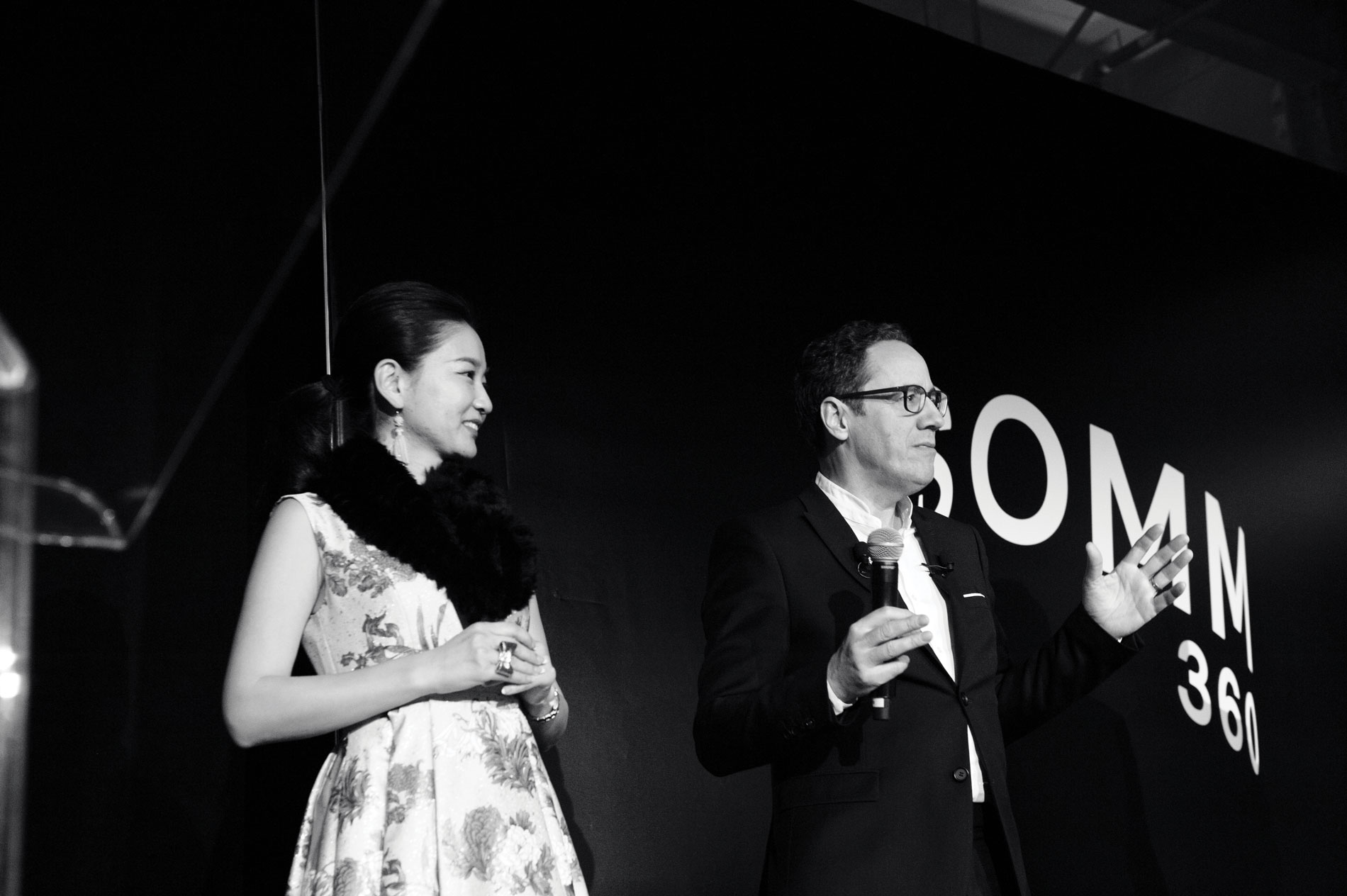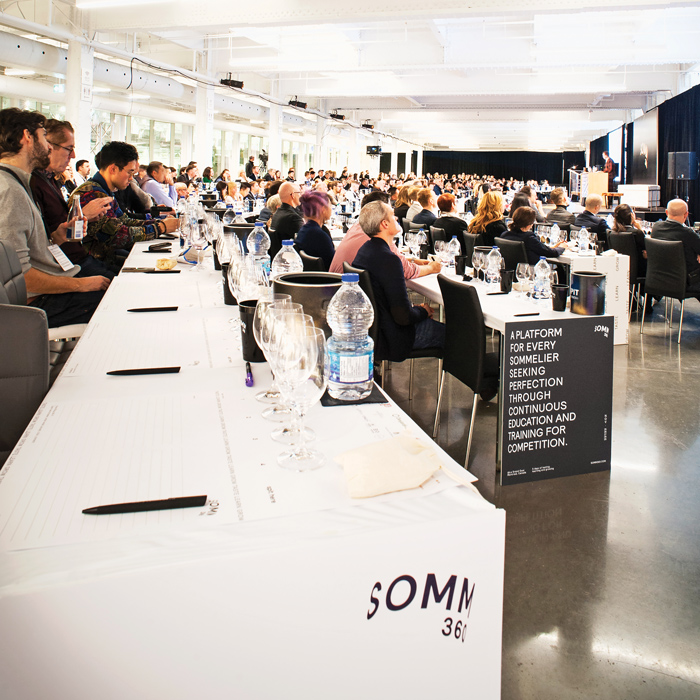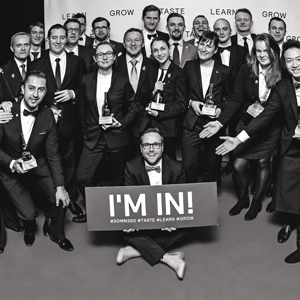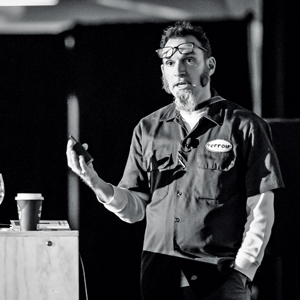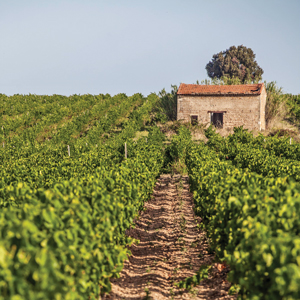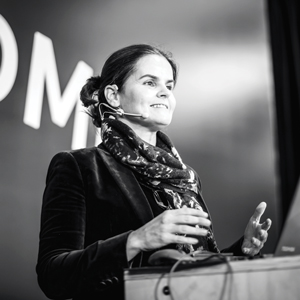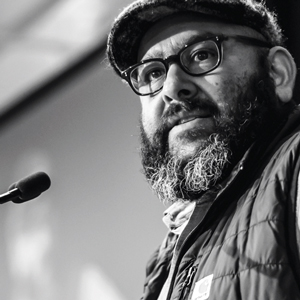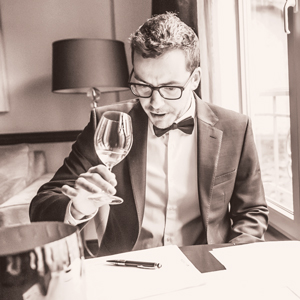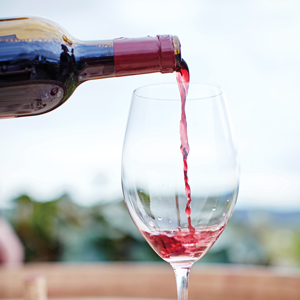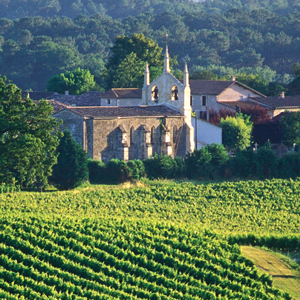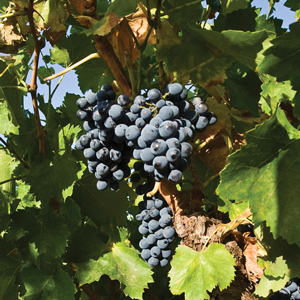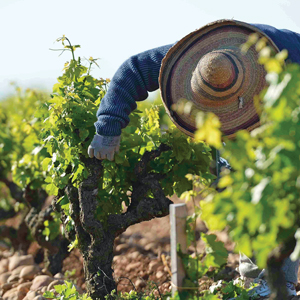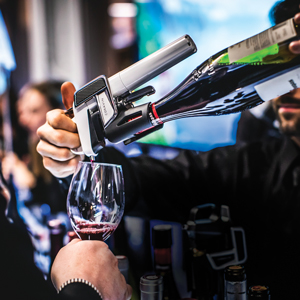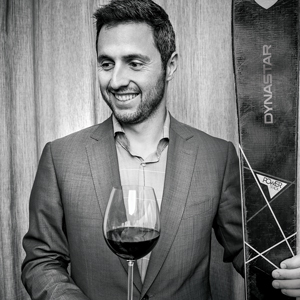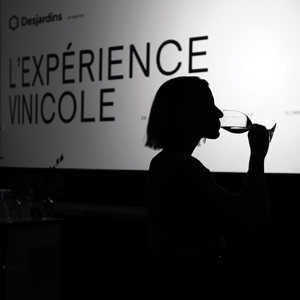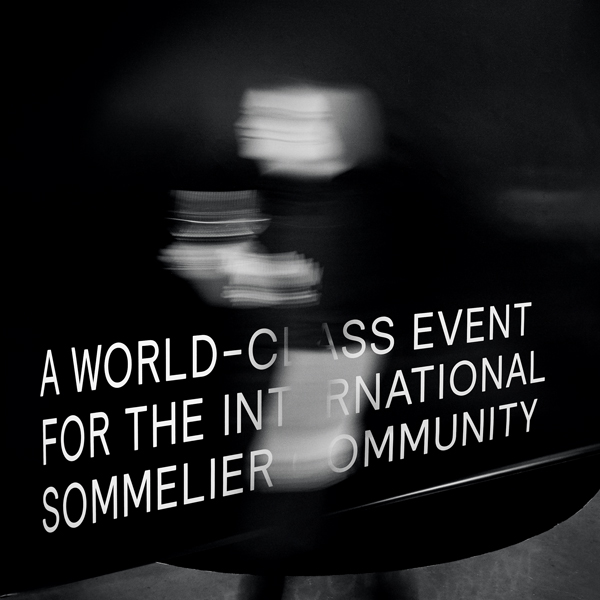SOMM360 is a platform for every sommelier seeking perfection through continuous education and training for competition.
Get the latest info about Somm360
© 2018 SOMM360


Francois Chartier is a globetrotting sommelier from Quebec now based in Barcelona. He is best known for the revolutionary approach to wine pairing and recipe creativity he outlined in his book Taste Buds and Molecules—The art and science of food, wine and flavor. As an advisor to the elBulli team, this “Createur d’harmonies” who crafted his own brand of European wines designed for food matching was recently invited to elaborate a new range of sake products in Japan. But his sakes are likely to differ from traditional styles, as Chartier is not afraid to transform the codified Japanese world of this traditional drink. As if that was not enough, he just started a new project with SONY Corporation in Tokyo, creating a dialogue between artificial intelligence (AI), robotics cooking and his aromatic science of “Molecular Harmony.” It will be an unusual and inspiring journey, if ever there was one! This, too, is what SOMM360 allows: opportunities to meet sommeliers who have opted for totally groundbreaking careers.
At the opening, SOMM360’s guest of honor, the sommelier and author Ferran Centelles, from the elBullifoundation, welcomed the audience by video conference, as he was launching another volume of his wine encyclopedia in Catalonia that day. His message resonated strongly with the participants: “A sommelier must try to be the most complete human being he could possibly be.” A few minutes later, when his great friend François Chartier took to the stage to give a lecture, the image struck more than one: no doubt the Quebec sommelier—who calls himself a “Créateur d’harmonies” thanks to his revolutionary scientific aromatic research on the molecular affinities between wine and food and who continues to push the limits of knowledge in his field—is exactly the kind of complete and bold human being described by Centelles in his opening address. The two met at elBulli and became close friends, united by their rejection of conventions and their belief in cutting-edge research.
A RENAISSANCE MAN
In the world of sommeliers, François Chartier is a Renaissance man. He is also a leader, unable to be satisfied with a simple observation or a partial truth, always on the move, always trying to expand his playing field and his area of expertise.
Always keen to better understand what links beverages to food, he embarked in the late nineties on in-depth scientific research into the gustatory and aromatic affinities between wine and food molecules, based on one or two intuitions and two or three observations dictated by his profession. Why, for example, did parsley and mint go so well with Sauvignon Blanc? Why, when black olives were added to a dish of tomato pasta, did it create an amazing match with Syrah? Or what makes it possible, when cooking dried figs, to create the perfect harmony with a Fino, this very dry Andalusian Jerez? This research, which does not seem likely to fade away, led François Chartier to discover a new aromatic science in 2002, that he has called “Molecular Harmonies,” and to write the best-selling Taste Buds and Molecules, an indispensable book on his aromatic science and on the countless molecules such as sotolon, solerone or the aniseed components common to wine and food. These allow a synergy so precise that this aromatic science created by Chartier has completely transformed the small world of sommeliers.
In the world of sommeliers, François Chartier is a Renaissance man. He is also a leader, unable to be satisfied with a simple observation or a partial truth, always on the move, always trying to expand his playing field and his area of expertise.
In 2010, the book was awarded Best Innovative Cookbook in the World at the Gourmand World Cookbook Awards in Paris. Translated into several languages, acclaimed as an exceptional new expertise by great chefs such as Ferran Adrià, this pure product of François Chartier’s career path reflects perfectly who this sommelier is and where his career has led him: into a universe dedicated both to audacity and rigour.
An inspiring path for young sommeliers
Now settled in Barcelona with his family, the sympathetic creator of food and wine harmonies began his SOMM360 presentation by telling the story of his unusual journey, a journey that may inspire young sommeliers as they project themselves into the future, to find their own way and contribute to making a difference. After offering a highly musical and energized video that reflected both his passion for music and the work of creative artists such as Jimmy Hendrix, as well as his supersonic career as a wine professional, François Chartier told the participants at SOMM360 that his exceptional sommelier background continues to take him further by allowing him to constantly reinvent himself through his various passions.

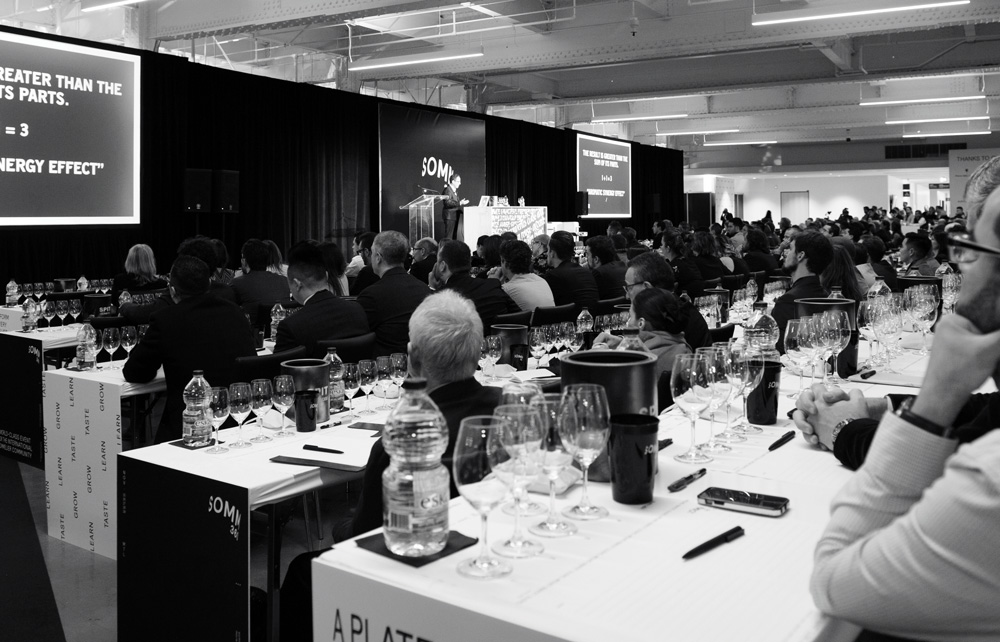

His most recent and ongoing adventure is about the blending potential of sake, which he launched with his usual enthusiasm at the invitation of the Japanese company Tanaka Sake Brewery. Sake, this age-old beverage made according to rules that were thought to be immutable, from carefully polished rice deprived of its impurities, is certainly not the product of blends: in fact, it is quite the opposite. But it is precisely the possibility of shaking up conventions to obtain a better final result that so interests Chartier. “A sentence by [theatre director] Franco Dragone decided the course of my life,” he explains to a captive and somewhat amazed audience. “The process generates the product. If you never change the process, you will never change the product.” Chartier uses the example of his idol, Jimmy Hendrix, who, because he dared to change the musical process, sound technology and codes of rock’n’roll, revolutionized the world of rock music.
In his case, Chartier was able to base his theory of molecular harmonies between wine and food on science, with the help of several researchers, such as Dr. Richard Béliveau and the Bordeaux oenologist Pascal Chatonnet. “It was Pascal who introduced me to the world of blending, when we created my first wine brands together, in 2011, based on aromatic synergy and which we were also able to use for creating the Série Gastronomie of Glutenberg crafted beers in partnership with the Glutenberg Brewery’s team.” For Chartier, the next step in blending was to focus on sake, and the opportunity led to innovation. “The world of blending has existed for centuries: by mixing the best with the best, we have obtained great champagnes and whisky. But now, on Chartier’s principle of 1 + 1 = 3, because the product of two dominant aromatic molecules creates a third, which is new and unique, and now we use this principle with sake.”
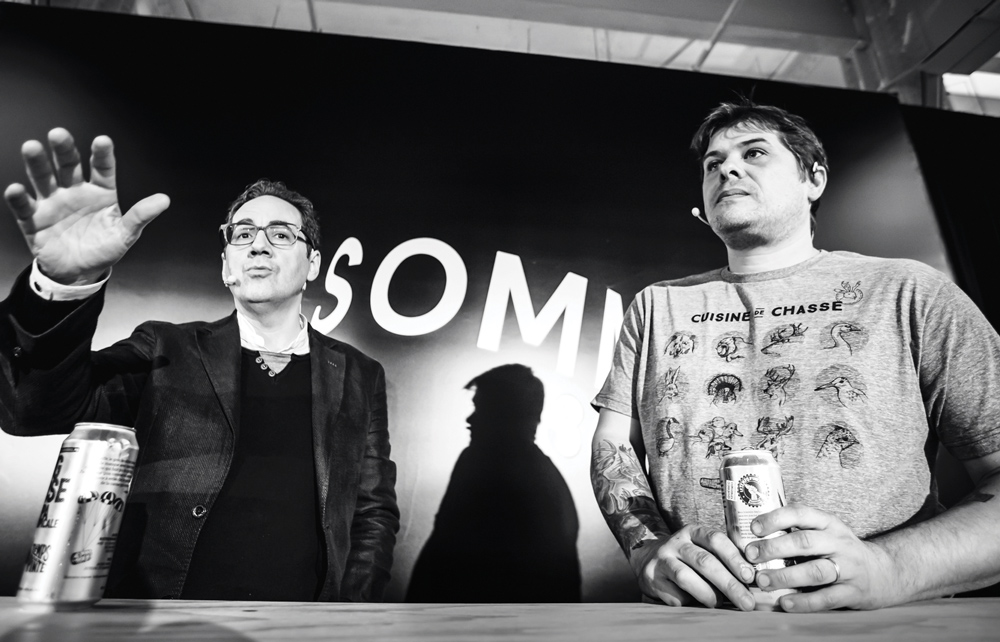
Francois Chartier and Stephane Modat
Sake, this age-old beverage made from carefully polished rice deprived of its impurities, is certainly not the product of blends: in fact, it is quite the opposite. But it is precisely the possibility of shaking up conventions to obtain a better final result that so interests Chartier; remember, Chartier’s aromatic science is about 1 + 1 = 3.
A new era for sake
According to Chartier, sake will enter a new era in the coming years, because of the young generation of toji who are trying many new ways to achieve more aromatic sakes, and thanks to this small revolution in which Chartier is daring to become a master blender. First, he wants to create blends from several sake productions, but from the same brewery, just like all the wine producers do. And he wants to use different types of koji, rice, yeasts, fermentation temperatures, aging methods and sake ages, as well as some wood barrels for the fermentation process to create new styles of sakes to be blended. “Once again, we must change the path we have been following here for a very long time by using different types of rice grains that are polished and re-polished, which is, in a way, the objective of sake. But when you think about it, using this approach to obtain purified grains, you lose a lot of the aromatic compounds and amino acid (umami taste) in rice,” he explains. Chartier believes it is time to shake up conventions. Never short of powerful images, he adds: “Would a winemaker peel the skin off the grapes before making wine? Isn’t it what they do when they polish and re-polish the rice grains?” The audience burst into laughter.
With his colourful examples, François Chartier manages to summarize in about 40 minutes the concepts that he spent years developing through patient research. He also makes his point very clearly when he explains the different types of sakes. Junmai belongs to the family of aniseed flavours, with notes of litchi, lavender, rose and white flowers. “It is a very inspiring sake, and there is a lot of potential for the blending process,” says Chartier. On the other hand, Koshu sake is aged longer, and its fermentation process enables notes of sotolon to develop, supplemented by notes of celery and mushrooms. After the tasting of his first two sakes, Chartier concludes: “Our next vintage will allow us to make the best possible blends. Our goal is to create great sakes which will be comparable to wine through their depth, freshness and complexity. Now, it’s time for you to taste the third glass. You can now enjoy a blend of the two first sakes we use to create a unique third sake.”
Closing with beer
Several years ago, François Chartier became friends with Stéphane Modat, one of Quebec’s great chefs, who works at Le Champlain restaurant at the Fairmont Le Château Frontenac, in Quebec City. Together, they hosted a TV show and published several cookbooks inspired by Chartier’s molecular research. “When the sommeliers finish their work, they usually buy themselves a good beer!” said Chartier, while offering a round of Quebec-brewed IPA, Le Temps d’une Pinte. Modat, for his part, proposed his own vision of Quebec’s terroir by presenting hors d’oeuvres from his latest book, a magnificent treatise on what should be considered the quintessential terroir food: wild game. The participants at SOMM360 were able to appreciate this closing seminar by cheering to the pleasure of food matching.
